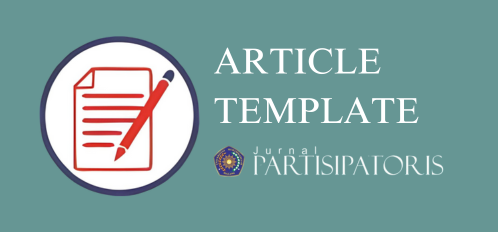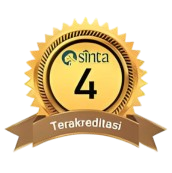Retorika Visual Iklan Pariwisata Indonesia Pada Akun Instagram Wonderful Indonesia dalam Masa Pra Pandemi, Pandemi dan Pasca Pandemi Covid-19
DOI:
https://doi.org/10.22219/jp.v4i1.27917Abstract
Pariwisata Indonesia mendapati tantangan dan dampak akibat dari pandemi virus corona. Sebuah tantangan bagi Kementerian Pariwisata dan Ekonomi Kreatif (Kemenparekraf) Indonesia untuk bisa menghadapi dan membuat strategi terkait rendahnya jumlah kunjungan wisata akibat pandemi Covid-19. Penggunaan platform instagram untuk publikasi iklan video pariwisata Indonesia dipilih sebagai media promosi dalam menghadapi situasi pandemi dan era new normal pasca pandemi, hal ini senada dengan tingginya tingkat penggunaan internet selama pandemi Covid-19. Penelitian ini dilakukan dalam rangka mengetahui perbedaan gaya penyajian iklan dari tiga vidio promosi yang diunggah Wonderful Indonesia dari masa sebelum masuknya corona virus sampai masa pandemi, dan pasca pandemi Covid-19 yang ditinjau dari segi retorika visualnya. Penelitian ini menggunakan pendekatan kualitatif dengan tipe interpretative dan berfokus pada pemaknaan pesan yang dilihat dari unsur retorika visual pada setiap scene. Hasil dari penelitian ini ditemukan bahwa ada perbedaan gaya penyajian dan pesan yang terkandung di dalam video dari segi konten, tema, dan visualisasi indeks ikon simbol pada masing-masing scene dalam video serta sama-sama mempunyai tujuan menciptakan iklan komersial untuk mempromosikan pariwisata Indonesia dan menjalin komunikasi dengan calon wisatawan.
Downloads
References
(2014). In N. Vera, Semiotika dalam Riset Komunikasi. Bogor: Ghalia Indonesia.
Alfathoni, M. A. (2016). Mise En Scene dalam Film Lamaran Sutradara Monty Tiwa. jurnal proporsi, 165.
CNN, I. (2022, mei 16). Sejarah Candi Borobudur dan Makna Reliefnya. Retrieved from cnnindonesia.com: https://www.cnnindonesia.com/edukasi/20220513155107-574-796488/sejarah-candi-borobudur-dan-makna-reliefnya
Foss, S. (2005). Theory of Visual Rhetoric. In K.Smith, S Moriarty, G.Barbatsis, K.Kenney (eds). Handbook of visual communication: theory, methods, and media. New Jersey: Laurence Erlbaum Associates,Inc.
Hesford, W. &. (2006). Rhetorical Visions: Reading and Writing in Visual. Upper Sider River. New Jersey: Prentice Hall.
Howard, G. (2010). Dictionary of Rhetorical term. usa: xlibris corporation.
Jasmani. (2018). Pengaruh promosi dan pengembangan produk terhadap peningkatan hasil penjualan. Jurnal Semarak, 1 No.3, 142 - 157 .
Kolenda, N. (2020, juli 30). The Psychology of Color. Retrieved from nickkolenda.com: https://www.nickkolenda.com/color-psychology/
Luthfia, D. A. (2021, februari 17). Penurunan Devisa Sektor Pariwisata Akibat Pandemi Covid 19. Retrieved from kumparan: https://kumparan.com/dianiraal17/penurunan-devisa-sektor-pariwisata-akibat-pandemi-covid-19-1vC5uRy4Fi0/full
Mardalis, A. d. (2017). Pemanfaatan Media Sosial untuk Membangun Kepercayaan Merk. Jurnal Universitas Muhammadiyah Surakarta, 53.
Mardira, S. (2020, oktober 10). Apa itu CHSE Pariwisata dan Ekonomi Kreatif? Retrieved from okezone.com: https://www.okezone.com/tren/read/2020/10/09/620/2291190/apa-itu-chse-pariwisata-dan-ekonomi-kreatif
Mardirah, S. (2020 ). Apa itu CHSE Pariwisata dan Ekonomi Kreatif? Retrieved from okezone.com: https://www.okezone.com/tren/read/2020/10/09/620/2291190/apa-itu-chse-pariwisata-dan-ekonomi-kreatif
Mulyadi, A. I. (2022). Analssis Semiotika C.S Piersce dalam Iklan Televisi. Ilmu Komunikasi Balayudha, 24.
Nurrohman, D. B. (2018). Gender In Social Media: Semotic Study Of Gender. Muhammadiyah Surakarta University. Jurnal Komunikator, 10(2), 116.
Paksi, F. (2021). Warna dalam Dunia Visual. IMAJI: Film, Fotografi, Televisi, &Amp; Media Baru, 90-97.
Rochim, A. (2020, juli 12). pandemi corona penggunaan internet masyarakat melonjak. Retrieved from nasional.sindonews.com: https://nasional.sindonews.com/read/98534/15/pandemi-corona-penggunaan-internet-masyarakat-melonjak-1594555669/7
Semedhi, B. (2011). Sinematografi-videografi: suatu pengantar. Bogor: Ghalia Indonesia.
Simanjuntak, T. R. (n.d.). Efektivitas Nation Branding “Wonderful Indonesia” sebagai Sebuah Strategi dalam Hubungan Diplomasi Pemerintah Indonesia Tahun 2011-2018 . Jurnal Cakrawala .
Sitorus, A. S. (2020, juni 9). New Normal di Tengah Pandemi. Retrieved from djkn.kemenkeu: https://www.djkn.kemenkeu.go.id/kpknl-sidempuan/baca-artikel/13169/New-Normal-di-Tengah-Pandemi-Covid-19.html
Taei, P. (2017, 2 22). why is visual marketing so effective? Retrieved from polepositionmarketing: https://www.polepositionmarketing.com/emp/why-visual-marketing-so-effective/
Tham, J. (2016). Visual Rhetoric: Parallels and Intersections of Rhetoric and Design Studies. Department of Writing Studies University of Minnesota, Twin Cities, 4.
Trihayuningtyas, E. (2018). Media Sosial Sebagai Sarana Informasi dan Promosi Pariwisata Bagi Generasi Z di Kabupaten Garut. Tourism Scientific Journal.
Wahyumul. (n.d.). Dasar Videografis. Retrieved from artvisi.or.id: https://www.artvisi.or.id/wp-content/uploads/2016/06/Dasar-Videografi.pdf
Wibowo, I. (2013). Semiotika Komunikasi - Aplikasi Praktis Bagi Penelitian dan Skripsi Komunikasi. Mitra Wacana Media.
Downloads
Published
How to Cite
Issue
Section
License

This work is licensed under a Creative Commons Attribution-ShareAlike 4.0 International License.
Authors who publish with Jurnal Partisipatoris agree to the following terms:
- For all articles published in the Jurnal partisipatoris, copyright is retained by the authors. Authors give permission to the publisher to announce the work with conditions. When the manuscript is accepted for publication, the authors agree to the automatic transfer of non-exclusive publishing rights to the publisher.
- Authors retain copyright and grant the journal right of first publication with the work simultaneously licensed under a Creative Commons Attribution-ShareAlike 4.0 International License that allows others to share the work with an acknowledgment of the work's authorship and initial publication in this journal.
- Authors are able to enter into separate, additional contractual arrangements for the non-exclusive distribution of the journal's published version of the work (e.g., post it to an institutional repository or publish it in a book), with an acknowledgment of its initial publication in this journal.
- Authors are permitted and encouraged to post their work online (e.g., in institutional repositories or on their website) prior to and during the submission process, as it can lead to productive exchanges, as well as earlier and greater citation of published work (See The Effect of Open Access).











